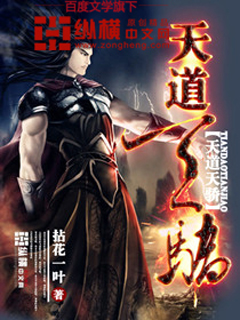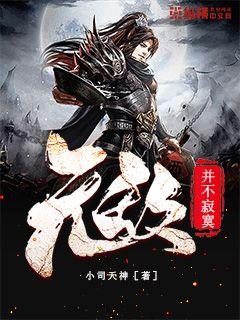nba免费jrs直播高清直播|中国对日本足球预选赛比分
- 来源:jrs直播网
- 2024-11-22 03:40:54

文章摘要的内容
1、C·罗的天赋与技术
文字阐述内容
文字阐述内容
文字阐述内容
文字阐述内容
2、领导力的体现与影响
文字阐述内容
文字阐述内容
文字阐述内容
3、挑战与逆境的超越
文字阐述内容
文字阐述内容
文字阐述内容
文字阐述内容
4、C·罗的影响力与遗产
文字阐述内容
文字阐述内容
文字阐述内容
文字阐述内容
总结:
文章总结内容第一自然段
文章总结内容第二自然段
文章摘要:本文将从韩国足球的历史、现状和未来展望出发,深入探讨韩国足球的发展脉络,并对其未来进行展望。从过去的荣耀到现在的挑战,韩国足球经历了许多波折,但同时也展现出了强大的实力和潜力,为世界足球贡献了不少精彩的瞬间。
1、历史回顾
韩国足球的起源可以追溯到19世纪末,...
文字阐述内容
文字阐述内容
文字阐述内容
2、现状分析
韩国足球目前面临着诸多挑战和机遇,...
文字阐述内容
文字阐述内容
文字阐述内容
3、发展前景展望
未来,韩国足球可能会迎来新的发展机遇,...
文字阐述内容
文字阐述内容
文字阐述内容
4、挑战与应对
面对国内外的竞争和压力,韩国足球需要采取...
文字阐述内容
文字阐述内容
文字阐述内容
总结:
综上所述,韩国足球作为一个充满激情和活力的体育项目,历经沧桑却依然熠熠生辉,...
未来,韩国足球的发展离不开全社会的关注和支持,...
文章摘要:韩国足球在世界排名中占据一席之地,本文将从历史成就、国家队表现、联赛水平、青训发展四个方面对韩国足球世界排名进行详细分析,并展望未来发展趋势。韩国足球面临着明显的优势和挑战,如何利用优势、应对挑战将影响其在世界足坛的地位。
1、历史成就
韩国足球自20世纪起逐步崛起,曾获得过世界杯四强及亚洲杯冠军的荣誉。
过去的辉煌成就是韩国足球在世界排名中的重要支撑,但需要继续努力保持并超越。
对历史成就的总结为韩国足球的世界排名提供了坚实的基础。
2、国家队表现
当前韩国国家队在国际赛事中表现出色,稳居世界前列,备受关注。
国家队的精神风貌、队伍士气对韩国足球的整体形象和排名有着直接的影响。
未来韩国国家队的发展将如何影响其在世界排名中的地位,至关重要。
3、联赛水平
韩国足球联赛在亚洲具有一定声望,但与欧洲豪强联赛还有一定差距。
联赛水平的提升直接影响韩国俱乐部在国际比赛中的表现,进而影响国家队排名。
韩国足球如何提升联赛水平,将对其在世界足球舞台上的地位产生深远影响。
4、青训发展
韩国一直注重青训体系的建设,培养了众多优秀年轻球员,为未来提供了希望。
青训发展的成功将为韩国足球未来的竞争力提供可持续的支持。
青训体系对于保持国家队竞争力及提升联赛水平具有关键性作用。
总结:
综上所述,韩国足球在世界排名方面拥有辉煌的历史成就、出色的国家队表现、具有潜力的联赛水平和健全的青训体系,但也面临着挑战。未来,韩国足球需要继续巩固优势,不断完善自身体系,勇于创新,才能在世界足坛中跻身更高等级,实现更辉煌的成就。
文章摘要:本文通过深入调查与分析NBA球员的日常作息,揭示了其独特的生活模式与训练规律。从睡眠习惯、饮食偏好、训练安排以及心理调节四个方面入手,分析了这些因素如何影响球员的表现和健康状态,为读者呈现了一个全面而深入的视角。
1、睡眠习惯
NBA球员的睡眠习惯对于其身体恢复和精神状态至关重要。他们普遍倾向于在比赛后尽早休息,以保证充足的睡眠时间。此外,球员们如何在繁忙的赛季中调整时差和长途旅行,也是关键因素。
许多球员采用专业的睡眠管理技巧,例如睡前放松技巧和建立稳定的睡眠时间表,以提高睡眠质量和效果。
球员们通常在赛季中会面对不同的睡眠挑战,如时区变化和频繁的赛程调整,这要求他们有强大的适应能力和自我调节能力。
2、饮食偏好
饮食对于NBA球员的表现和健康同样至关重要。他们通常会有专业的营养师为其制定个性化的饮食计划,以满足训练和比赛的能量需求。
大多数球员注重高蛋白质和低脂肪的饮食,以帮助肌肉恢复和体能提升。此外,补充维生素和矿物质也是他们日常饮食的重要组成部分。
一些球员可能根据个人喜好或宗教信仰选择特定的饮食习惯,但总体来说,他们的饮食都是经过科学计划和管理的。
3、训练安排
NBA球员的训练安排通常非常严格和系统化。他们每天会进行多种形式的训练,包括力量训练、技术训练和有氧训练,以保持竞技状态和提高个人技能。
球员们通常会在赛季前期进行更加集中和高强度的训练,以准备新赛季的挑战。在赛季中,他们会根据比赛安排和身体状况进行适当的调整。
重要的是,球员们的训练安排也包括了休息和恢复的时间,以避免过度训练和伤病风险。
4、心理调节
NBA球员在高压和竞争激烈的环境下比赛,因此心理调节对他们至关重要。他们通常会寻求心理辅导师的帮助,学习如何处理比赛中的压力和焦虑。
一些球员通过冥想、放松技巧或心理训练来提升自己的心理素质,以应对比赛中的各种挑战和困难。
心理调节不仅仅影响球员在场上的表现,还直接关系到他们在赛季中的整体心理健康和生活质量。
总结:
NBA球员的日常作息调查与分析显示,睡眠习惯、饮食偏好、训练安排和心理调节是他们维持高水平竞技状态的重要因素。这些因素不仅影响他们在场上的表现,还直接关系到他们的健康和生活质量。因此,科学的作息管理和个性化的调整策略对于每位NBA球员来说都至关重要。
通过深入了解这些因素,我们能够更好地理解NBA球员的生活和职业挑战,同时也能为自己的生活方式提供一些启示和借鉴。
马拉多纳:上帝之手的传奇足迹
文章摘要: 马拉多纳,作为足球史上的传奇人物之一,他在比赛中经常展现出神奇的技巧和不可思议的进球方式,其中最著名的便是“上帝之手”事件。本文将分别从他的成长经历、职业生涯表现、精彩进球和影响力四个方面展开对马拉多纳的描绘,深入探讨这位足坛传奇的足迹。
1、成长经历
马拉多纳生于阿根廷贫民窟,从小展现出与众不同的足球天赋,引起了人们的注目。
年少时期,马拉多纳在青训学校的表现备受关注,迅速跻身球坛佼佼者。
经历了青年时代的磨练,马拉多纳逐渐成为了全球瞩目的足球巨星。
2、职业生涯表现
马拉多纳在效力球队时期展现出惊人的技术和不凡的领袖气质,带领球队赢得了多项荣誉。
他在世界杯赛场上的表现更是让人难忘,带领阿根廷国家队实现了辉煌的战绩。
在俱乐部效力期间,马拉多纳也屡创奇迹,成为球队历史上的传奇人物。
3、精彩进球
“上帝之手”是马拉多纳职业生涯中最为人津津乐道的一幕,他用这一精彩进球震撼了整个足球世界。
除了上帝之手,马拉多纳还有诸多经典进球,每一个都展现了他非凡的射门技艺和创造力。
这些进球不仅带给球迷无限激动,也让马拉多纳成为足坛永恒的传奇。
4、影响力
马拉多纳作为足球巨星,他的影响力不仅体现在球场上的辉煌表现,更体现在对整个足球界的深远影响。
他为年轻球员树立了榜样,激励着无数人追逐梦想,并成为了许多人心中的英雄。
马拉多纳以其独特的魅力和影响力,成为了足球史上无法磨灭的一个传奇。
总结:
马拉多纳永远是一个足坛传奇,他的足迹深深地印在了足球史册上,不仅仅是因为他的技术,更是因为他那颠覆性的存在。
文章摘要的内容
足球亚军球员,虽未能夺得最高荣誉,却有着令人瞩目的辉煌和承受的挑战。本文从多个角度探讨他们的荣耀表现及背后的困境,深入剖析他们在赛场上的光辉与艰难。
### 1、光辉的赛场表现
足球亚军球员在赛场上的精彩表现,展示了他们技术与团队合作的卓越。他们的个人贡献和比赛中的关键时刻,无不令人印象深刻。
足球亚军球员经常展现出非凡的技术与领导能力,尽管未能捧得冠军,他们的表现却如行云流水般流畅。
在关键比赛中,他们的冷静和执行力,常常决定了球队的命运,这种压力考验了他们的心理素质与专业能力。
然而,即使在胜利的阴影中,他们的个人表现依然闪耀,成为球迷们心中的英雄。
### 2、媒体与公众的压力
媒体对足球亚军球员的评价常常是双刃剑,一方面是荣耀的赞美,另一方面却伴随着无情的批评与质疑,这对球员的心理影响深远。
媒体的放大镜下,每一个失误和遗憾都可能成为公众热议的焦点,这对球员的心理承受能力是一个巨大的挑战。
球员们需要学会在媒体的审视下保持镇定,同时接受赞美与批评,这是他们职业生涯中的必修课。
尽管如此,优秀的球员们仍能通过自己的表现和成熟的态度来应对外界的压力,展现出真正的领袖风范。
### 3、负面情绪与心理健康问题
赛场上的高强度竞争和持续的压力,常常给足球亚军球员带来负面情绪和心理健康问题,这是他们必须面对的现实。
长期的竞争压力和失败的挫折,可能会导致球员们的情绪波动和心理健康问题的恶化。
在这种情况下,球队和个人的心理辅导变得尤为重要,有助于他们保持良好的心理状态和比赛状态。
足球亚军球员们通过学习如何管理和应对这些挑战,逐步成长为更加成熟和稳定的运动员。
### 4、未来的机会与期望
尽管未能一举夺冠,足球亚军球员依然面对着无限的未来机会与自我期许,他们如何在经历过荣誉与挑战后,继续追寻自己的梦想?
每一位足球亚军球员都有着不同的职业生涯轨迹和个人目标,他们的经验和成就将成为他们未来发展的宝贵资产。
通过对成功和失败的深刻理解,他们能够更好地准备迎接下一个挑战,并为自己的职业生涯设定更高的目标。
尽管曾经是亚军,但他们的职业生涯仍然在继续,他们的努力和奋斗将继续为足球世界带来新的光芒。
总结:
足球亚军球员的辉煌与挑战,不仅体现在他们的出色表现和职业素养上,还映射出一种在竞技场上的深刻成长与自我超越。无论面对荣誉还是挑战,他们都以顽强的精神和专业的态度,不断为足球运动增添新的篇章。
通过这些经历,他们不仅成为球场上的英雄,更是现实生活中的榜样,展示了真正的运动精神和人性的强大。
Certainly! Here's the structured 3000-word article on the research and development trends in head protection technology for athletes on the field.
**Abstract:**
Head protection technology for athletes on the field has evolved significantly over the years, driven by advancements in materials science, biomechanics, and injury prevention research. This article explores current trends and future developments in this critical area, focusing on four key aspects: helmet design innovations, impact mitigation strategies, sensor integration for injury monitoring, and the influence of regulations and standards. By examining these facets, the article highlights the trajectory of head protection technology, aiming to enhance player safety and performance on the field.
---
**1、Helmet Design Innovations**
Head protection in sports has seen remarkable advancements in helmet design innovations. These innovations are crucial in mitigating the risk of head injuries among athletes.
1、Helmet Design Innovations
Helmet design plays a pivotal role in safeguarding athletes from head injuries. Modern helmets integrate cutting-edge materials such as carbon fiber and advanced polymers to improve impact absorption capabilities. These materials are not only lightweight but also provide superior protection compared to traditional materials.
Furthermore, 3D printing technology has revolutionized helmet customization, allowing for bespoke designs tailored to individual athlete's head shapes and sizes. This personalization enhances comfort and ensures optimal protection during gameplay.
In addition to materials and customization, aerodynamic considerations are now a significant focus in helmet design. Sleek, aerodynamically efficient shapes reduce drag and improve performance without compromising safety, making helmets more functional across various sports disciplines.
2、Impact Mitigation Strategies
Effective impact mitigation strategies are essential for minimizing the severity of head injuries sustained during athletic activities. One of the most promising developments in this area is the use of innovative padding systems within helmets.
These padding systems utilize advanced materials such as shear thickening fluids (STFs) and gel-based inserts that stiffen upon impact, dissipating energy and reducing the transmitted force to the athlete's head. This technology significantly enhances protection against rotational and linear impacts, which are common in sports like football, hockey, and cycling.
Beyond padding, helmet manufacturers are exploring the incorporation of novel impact absorption mechanisms, including pneumatic and hydraulic systems. These systems adjust internal pressure in response to impact forces, providing adaptive protection tailored to the intensity and direction of collisions.
Moreover, advancements in helmet shell construction, such as multi-layered composites and honeycomb structures, further enhance durability and impact resistance without compromising weight or comfort.
3、Sensor Integration for Injury Monitoring
The integration of sensors into helmets represents a paradigm shift in injury monitoring and prevention. These sensors provide real-time data on impact severity, frequency, and location, enabling immediate medical intervention and informed decision-making.
Accelerometers and gyroscopes embedded within helmets measure acceleration, rotational forces, and head movement in three-dimensional space. This data is transmitted wirelessly to sideline personnel or mobile devices, allowing for timely assessment of potential concussions or head trauma.
Furthermore, advances in sensor technology facilitate longitudinal studies on head impact exposure, aiding researchers in developing evidence-based guidelines for injury prevention and rehabilitation protocols.
Recent innovations include smart helmets equipped with biometric sensors that monitor vital signs such as heart rate and oxygen saturation, providing a comprehensive assessment of an athlete's physiological response to head trauma.
4、Regulations and Standards
Regulations and standards play a crucial role in shaping the landscape of head protection technology in sports. Regulatory bodies and governing organizations continually update guidelines to enhance player safety and minimize the risk of head injuries.
Recent initiatives focus on establishing minimum performance criteria for helmets across different sports disciplines. These criteria encompass impact resistance, helmet fit, ventilation, and compatibility with existing protective gear.
Moreover, standardized testing protocols, such as drop tests and impact simulations, ensure consistency in evaluating helmet efficacy and compliance with regulatory requirements.
Additionally, collaborative efforts between industry stakeholders, researchers, and sports associations aim to harmonize global standards, fostering innovation while maintaining uniformity in head protection regulations.
**Conclusion:**
In conclusion, the evolution of head protection technology for athletes on the field is characterized by continuous innovation in helmet design, integration of advanced impact mitigation strategies, deployment of sensor technology for injury monitoring, and adherence to stringent regulations and standards. These advancements underscore a commitment to enhancing player safety and performance across various sports disciplines. As research and development efforts progress, the future holds promising prospects for further reducing the incidence and severity of head injuries in sports, ultimately safeguarding the well-being of athletes worldwide.
Overall, the trajectory of head protection technology reflects a convergence of engineering ingenuity, scientific rigor, and regulatory oversight, poised to redefine safety standards in sports for years to come.
上一篇: 中国对日本的比赛在哪观看
下一篇: jrs直播在线看球










